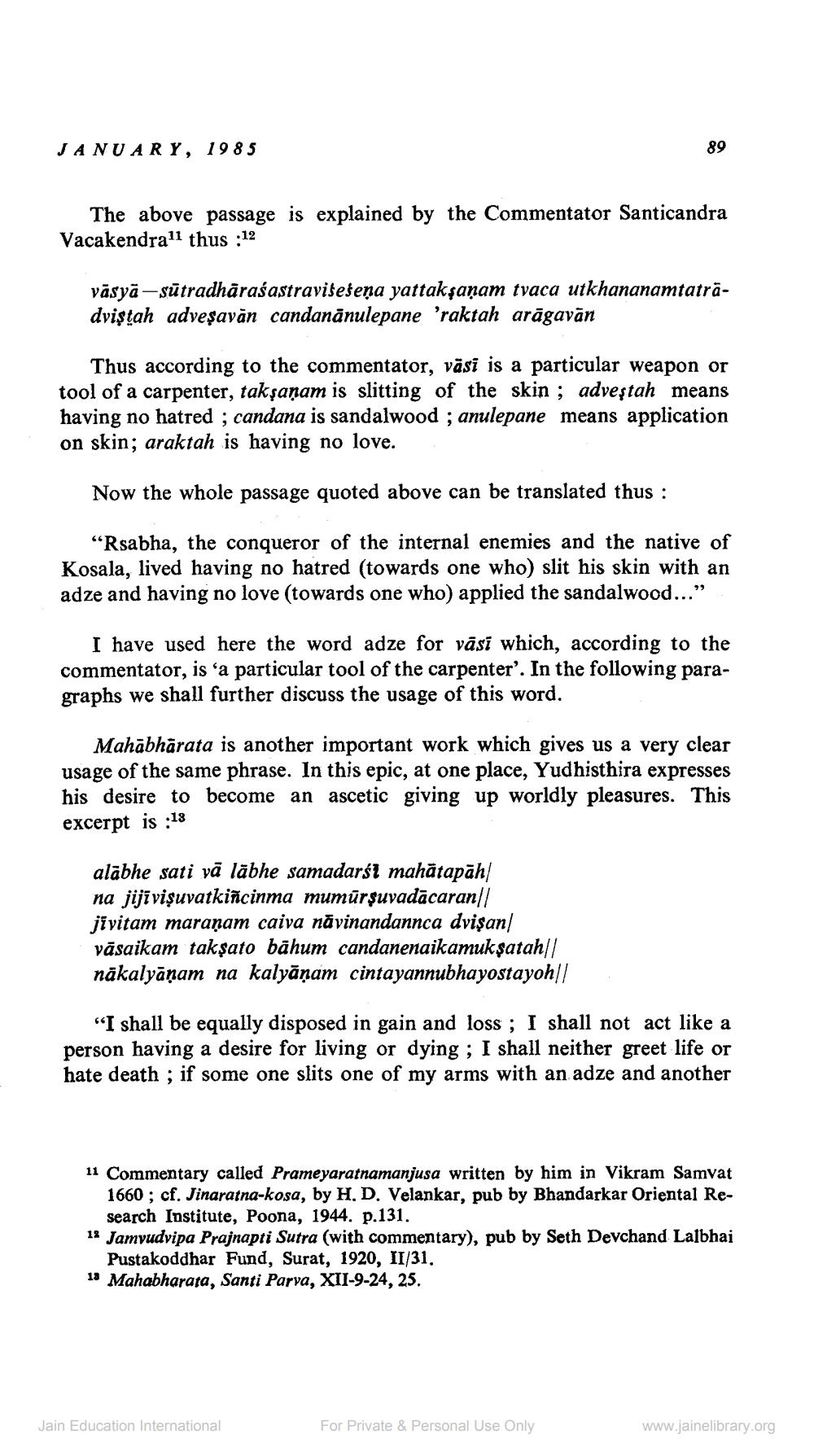________________
JANUARY, 1985
The above passage is explained by the Commentator Santicandra Vacakendra11 thus :12
vāsyā sūtradhāraśastraviseseṇa yattakşaṇam tvaca utkhananamtatradviştah adveṣavăn candanānulepane 'raktah arāgavān
89
Thus according to the commentator, vāsī is a particular weapon or tool of a carpenter, takşaṇam is slitting of the skin; adveştah means having no hatred; candana is sandalwood; anulepane means application on skin; araktah is having no love.
Now the whole passage quoted above can be translated thus:
"Rsabha, the conqueror of the internal enemies and the native of Kosala, lived having no hatred (towards one who) slit his skin with an adze and having no love (towards one who) applied the sandalwood..."
I have used here the word adze for vāsī which, according to the commentator, is 'a particular tool of the carpenter'. In the following paragraphs we shall further discuss the usage of this word.
Mahābhārata is another important work which gives us a very clear usage of the same phrase. In this epic, at one place, Yudhisthira expresses his desire to become an ascetic giving up worldly pleasures. This excerpt is :13
alabhe sati vā lābhe samadarsi mahātapāh na jijiviṣuvatkiñcinma mumūrṣuvadācaran|| jivitam maraṇam caiva nāvinandannca dvişan vāsaikam takṣato bahum candanenaikamukṣatah|| nākalyāṇam na kalyāṇam cintayannubhayostayoh||
"I shall be equally disposed in gain and loss; I shall not act like a person having a desire for living or dying; I shall neither greet life or hate death; if some one slits one of my arms with an adze and another
11 Commentary called Prameyaratnamanjusa written by him in Vikram Samvat 1660; cf. Jinaratna-kosa, by H. D. Velankar, pub by Bhandarkar Oriental Research Institute, Poona, 1944. p.131.
12 Jamvudvipa Prajnapti Sutra (with commentary), pub by Seth Devchand Lalbhai Pustakoddhar Fund, Surat, 1920, II/31.
13 Mahabharata, Santi Parva, XII-9-24, 25.
Jain Education International
For Private & Personal Use Only
www.jainelibrary.org




